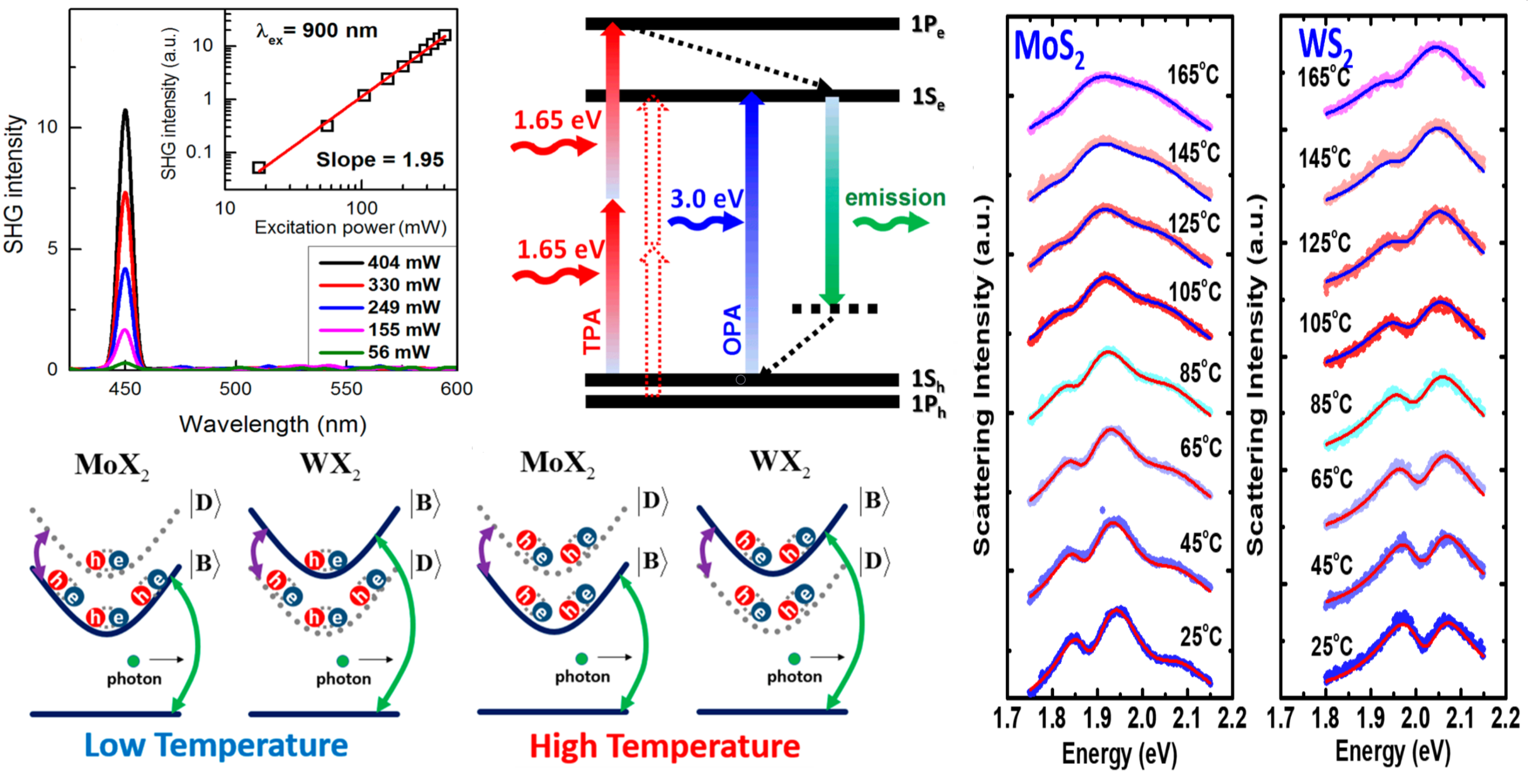Exciton polaritons in low-dimensional semiconductors
Low-dimensional transition metal dichalcogenides (TMDCs) have rich parity-related one- and two-photon excitonic transitions and spin-orbit coupling induced bright and dark excitons. However, probing and manipulating parity- or spin-forbidden dark excitons requires the use of either nonlinear optical spectroscopy or the inhomogeneous fields and the associated Purcell effects as well as extreme approaches. In this context, we have:
(1) observed the C-exciton resonance enhanced second-harmonic generation in chemically prepared MoS2 nanosheets and demonstrated how to combine one- and two-photon photoluminescence excitation spectroscopy to determine the energy splitting of the parity-allowed 1Se and parity-forbidden 1Pe excitonic states in MoS2 nanodots (ACS Photonics 3 (12), 2434-2444, 2016);
(2) developed an elegant tight-binding model to understand the measured layer-dependent exciton resonance energies of WS2 (Nanoscale Horizons 4 (4), 969-974, 2019), showing good agreement with the density functional theory calculation results; we have also shown that the temperature dependence of the A-exciton emission energy in monolayer WS2 can be well described with the Varshni formula and its temperature-dependent emission intensity can be attributed to the thermal-induced redistribution of bright and dark exciton populations at elevated temperatures;
(3) shown in the strong coupling regime how to utilize plasmon-exciton strong coupling spectroscopy to determine the dark exciton energies of monolayer MoS2 and WS2 by examining their respective temperature-dependent bright-exciton coupling strength with the localized surface plasmons of a single metallic nanoparticle (ACS Photonics 6, 411-421, 2019);
(4) investigated in the weak coupling regime the Purcell effect-enhanced excitonic photoluminescence of monolayer MoS2 inserted in the gap of a gold nanoparticle–alumina–gold film structure. Under confocal illumination by a 532 nm CW laser, we observed a 7-fold emission intensity enhancement for the cavity-sandwiched MoS2 at an optimal alumina thickness of 5 nm, corresponding to a local emission enhancement of ∼350 by normalizing the actual illumination area to the cavity’s effective near-field enhancement area (Nanophotonics 9 (7), 2097-2015, 2019);
(5) demonstrated that the coupling of spin-forbidden dark excitons to an ultrathin metal nanoparticle-on-mirror nanocavity leads to plasmon-induced resonant emission with the intensity comparable to that of the spin-allowed bright excitons. A three-state quantum model combined with full-wave electrodynamic calculations reveals that the radiative decay rate of the dark excitons can be enhanced by nearly 6 orders of magnitude through the Purcell effect, therefore compensating its intrinsic nature of weak radiation (Nano Letters 22 (5), 1915-1921, 2022);
(6) developed a Pb-S bonding approach to synthesize water-resistant perovskite@silica nanodots, and demonstrated a two-photon-pumped whispering-gallery mode laser device made of these ultra-stable nanodots, retaining 80% of its initial emission quantum yield when immersed in water for 13 h (Nature Communications 11, 1192, 2020).
